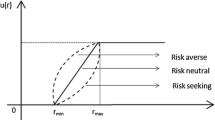Abstract
Improved health, equity, macroeconomic efficiency, efficient provision of care, and client satisfaction are the common goals of any health system. The relative significance of these goals varies, however, across nations, communities and with time. As for health care finance, the attainment of these goals under varying circumstances involves alternative policy options for each of the following elements: sources of finance, allocation of finance, payment to providers, and public-private mix. The intricate set of multiple goals, elements and policy options defies human reasoning, and, hence, hinders effective policymaking. Indeed, "health system finance" is not amenable to a clear set of structural relationships. Neither is there a universe that can be subject to statistical scrutiny: each health system is unique. "Fuzzy logic" models human reasoning by managing "expert knowledge" close to the way it is handled by human language. It is used here for guiding policy making by a systematic analysis of health system finance. Assuming equal welfare weights for alternative goals and mutually exclusive policy options under each health-financing element, the exploratory model we present here suggests that a German-type health system is best. Other solutions depend on the welfare weights for system goals and mixes of policy options








Similar content being viewed by others
References
Arrow KJ (1963) Uncertainty and the welfare economics of medical care. Am Econ Rev 53:41–973
Beck K, Spycher S, Holly A, Gardiol L (2001) Risk adjustment in Switzerland. Presented at the Risk Adjustment Network Meeting. Amsterdam, April
Buchner F, Wasen J (2001) Needs for further improvement: risk adjustment in the German health insurance system. Presented at the Risk Adjustment Network Meeting. Amsterdam, April
Chernichovsky D (1995) Health system reforms in industrialized democracies: an emering paradigm. Milbank Q 73:339–372
Chernichovsky D (1995) What can developing economies learn from developed economies? Health Policy 32:79–91
Chernichovsky D (2000) The public-private mix in the modern health care system: concepts, issues, and policy options revisited. NBER working paper no W7881, September
Chernichovsky D (2002) Pluralism, choice, and the state in the emerging paradigm in health systems. Milbank Q 80:5–39
Chernichovsky D, Chinitz D (1995) The political economy of health system reform in Israel. Health Econ 4:127–141
Chernichovsky D, Potapchik E (1999) Genuine federalism in the Russian health care system; changing roles of government. J Health Polit Policy Law 34:116–114
Chernichovsky D, Shirom A (1997) Equity and the Israeli health care system. In: Kop Y (ed) The allocation to social services in Israel. Jerusalem: Center for Policy Studies
Chernichovsky D, Barnum H, Potapchik E (1996) Health system reform in Russia: the finance and organization perspectives. Econ Transition 4:113–134
Chernichovsky D, Kirsanova T, Potapchik E, Sosenskaya E (1998) Inequality of health finance, resources, and mortality in Russia: potential implications for health and medical care policy. Health Health Care Health Econ, pp 253–270
Clair US, Klir GJ, Yuan B (1997) Fuzzy set theory: foundations and applications. New York: Prentice Hall
Hsiao W (1995) Medical savings accounts: lessons from Singapore. Health Aff (Millwood) 14:260–266
Jang R, Gulley N (1995) Fuzzy logic toolbox for use with MathLab. Mathworks
Kampe de Feriet J (1982) Interpretation of membership functions of fuzzy sets in terms of plausibility and belief. Gupta MM, Sanchez E (eds) Fuzzy information and decision process. Amsterdam: North-Holland, pp 93–98
Kim K, Moody P (1992) More resources better health? A cross-national perspective. J Soc Sci Med 34:837–842
Klir GJ (1993) Developments in uncertainty-based information. In: Yovitis MC (ed) Advances in computers, vol 36. San Diego: Academic, pp 255–332
Lamotte M, Leverat L, Rondeau L, Ruelas R (1997) A defuzzification method respecting the fuzzification. Fuzzy Sets Syst 86:311–320
Macintyre S (1989) The role of health services in relation to inequalities in health in europe. In: Fox J (ed) Health inequalities in European countries. London: Gower, pp 317–332
Massaro T A, Wong YN (1995) Positive experience with medical savings accounts in Singapore. Health Aff (Millwood) 14:266–272
McNeil D, Freiberger P (1993) Fuzzy logic: the discovery of a revolutionary computer technology and how it is changing our world. New York: Touchstone, pp 11–12
Oates WE (1972) Fiscal federalism. New York: Harcourt Brace Jovanovich
Reischauer RD (1995) Medicare: what to do? Brooking Rev 13, no 3
Wagstaff A, van Doorstaer E (1992) Equity in the delivery of health care: some international comparisons. J Health Econ 11:389–411
Wagstaff A, van Doorstaer E (1992) Equity in the financing of health care: some international comparisons. J Health Econ 11:361–387
World Bank (1993) World development report 1993: investing in health. Oxford University Press, New York
Yip WC, Hsiao WC (1997) Medical savings accounts: lessons from China. Health Aff (Millwood) 16:244–251
Author information
Authors and Affiliations
Corresponding author
Rights and permissions
About this article
Cite this article
Chernichovsky, D., Bolotin, A. & de Leeuw, D. A fuzzy logic approach toward solving the analytic enigma of health system financing. HEPAC 4, 158–175 (2003). https://doi.org/10.1007/s10198-003-0168-3
Issue Date:
DOI: https://doi.org/10.1007/s10198-003-0168-3




